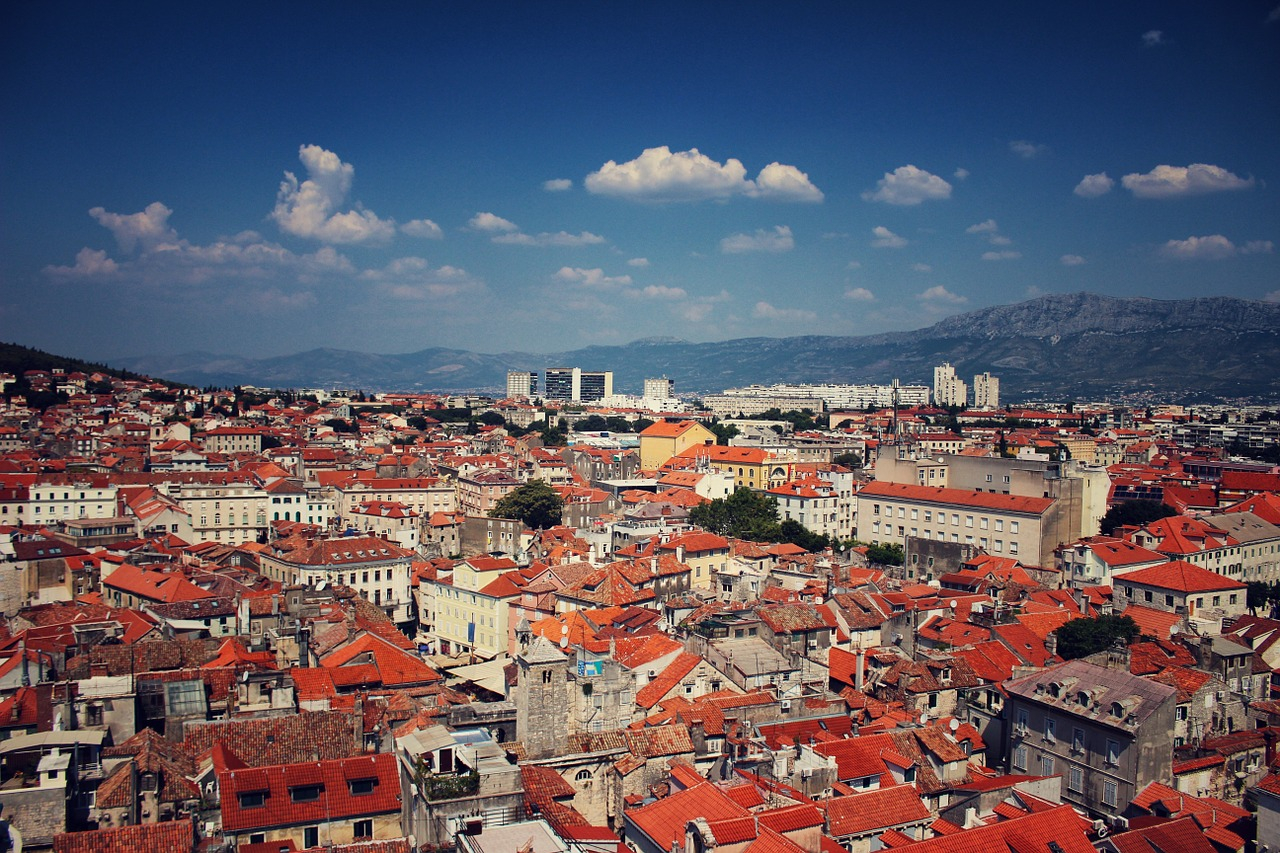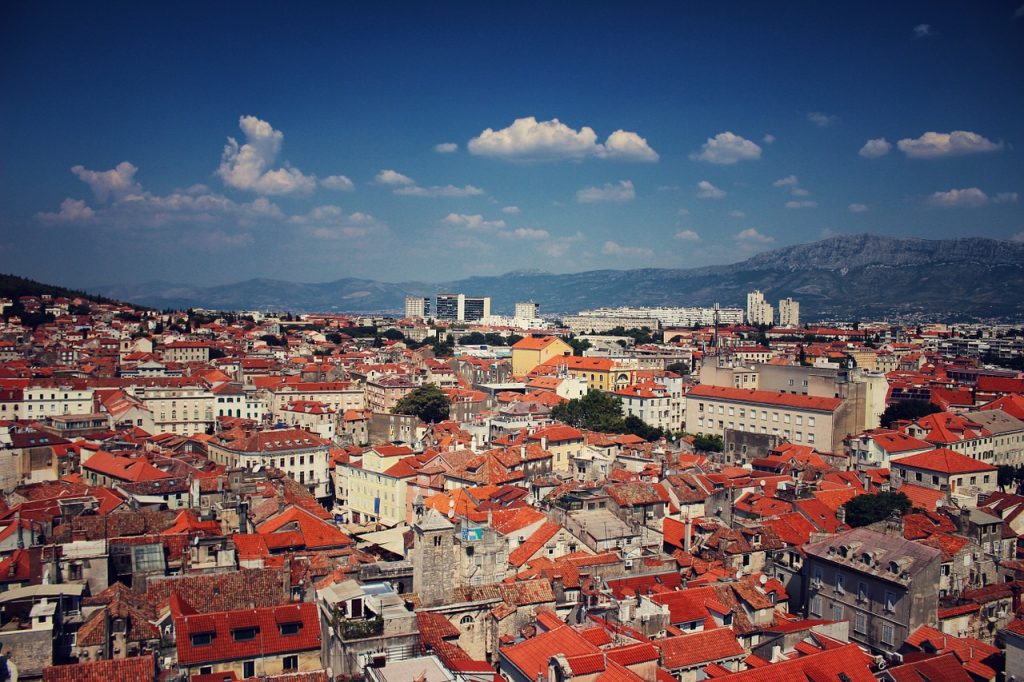
October 10, 2020 – What was found long ago in the Split neighborhood of Manuš is not an odeon, nor an amphitheater, but a late antique macellum. That is, an ancient Roman indoor market!
Sloboodna Dalmacija writes that this is a site that has surprised with its invaluable discoveries for the history of Split for over a hundred years. Katja Marasović from the Department of Architectural Heritage at the Faculty of Civil Engineering, Architecture and Geodesy in Split, archaeologist Anita Penović from “Temenos” and archaeologist Nebojša Cingeli from “Neira” are digging in to find out more.
As early as 1897, the historian and archaeologist Luka Jelić concluded that the ancient settlement of Spalatum existed in the area of Split before the construction of Diocletian’s Palace. He believed that its center was in the old suburb of Manuš, along the road that led from Solin to the bay of Split. This position on the Tabula Peutigeriana is marked Spalato. Jelic based his conclusion on the findings of architecture and graves from the second or beginning of the third century, found during the excavation of the railway near the Bulat and Tara mansions and the Girometta vineyards.
Subsequent research has shown that in Manuš and Dobri, on both sides of Solinska cesta (today Ulica Domovinskog rata and the northern part of Livanjska), there are remains of architecture and graves that can be dated to the 1st and 4th century. In the latest research in Manuš, inside traditional houses, the foundations and lower parts of the walls of late antique buildings were found, which gave new data on the distribution and urban scheme of Spalatum.
In 1954, south of the Austrian reservoir on Domovinskog rata Street, archaeologists led by Duje Rendić-Miočević found a part of an early Christian three-nave basilica with a characteristic trapezoidal ground plan with a semicircular apse on the east side and preserved floor mosaics in places. A few years later, experts from the Urban Institute found the southwest corner of the basilica and part of the east wall and apse of another early Christian basilica. Based on historical sources, Tomislav Marasović concluded that it was a site “ad basilicas pictas – on painted basilicas,” where a provincial church synod was held in 1185, and he dated the basilicas themselves to the fifth and sixth centuries.
Twenty years ago, archaeologists from the Institute for the Protection of Monuments found an early Christian baptistery with a cross-shaped baptismal font lined with precious alabaster slabs at the same site. However, the remains of an earlier building with three concentric walls within orthogonal walls were also found. Researchers interpreted the findings as remnants of an ancient odeon (theater), and according to movable findings, they dated it to the first or second century. Through the efforts of the head of the Conservation Department, dr. Radoslav Bužančić, new archeological excavations were carried out seven years ago west of that locality, below Domovinskog rata Street. It was then determined that the circular walls continued further east, so Bužančić assumed that it was not a theater but an amphitheater. However, the latest evidence from the three researchers says otherwise.
“The described archeological discovery shows that there was a large central building in Spalatum, of which only the foundations and in some places the lowest parts of the walls have been preserved to this day. The remains found lead to the conclusion that it is a square floor plan with a round courtyard surrounded by a porch in the middle. Around the porch were trapezoidal rooms, bordered by two circular walls and radial walls. The main axis of the building, in the north-south direction, coincides with the axis of the historic road that led from Salona to the northern gate of the Palace,” said Dr. Marasović, Penović, and Cingeli, explaining that the small thickness of the walls (55 to 70 cm) and the construction technique show that for reasons of stability they could not be higher than five to six meters, which means that the building was a ground floor or a single story.
The ground plan of the large late antique building has a circular courtyard thirty meters in diameter, surrounded by a porch oriented to 24 rooms of about 25 square meters. With a square floor plan, where another 28 rooms of 30 to 70 square meters can be assumed, with one entrance in the middle of each façade, it is suggested that it is a macellum – an ancient Roman indoor market! This assumption was also confirmed by the architect Jean-Louis Paillet, a French expert in ancient architecture.
This is supported by movable findings such as a measuring cup for grain and money from the fourth to the sixth century. Findings of lavish marble cladding, which do not lag behind those in Diocletian’s Palace in terms of quality, show that the building was lavishly decorated. And some metal elements, such as bronze ornaments in the shape of leaves, confirm such a conclusion. It can be assumed that the Split macellum, like the others in the Roman Empire, was equipped with public toilets, the architects concluded, contributing to a new historical sensation of this archaeological site.
“The foundations of the macellum are intersected by the aqueduct canal of Diocletian’s Palace from the northeast to the southwest. At the junction of their walls, it is clearly seen that the foundation of the macellum leaned against the already existing wall of the aqueduct canal, which is clear evidence that it was formed after the aqueduct. It is reliably known that the emperor Diocletian settled in the Palace in 305, after his abdication in Nicomedia, and lived there until he died in 316. Except for some movable findings from the first and second centuries, which prove the earlier phase of the site’s life, most pottery findings date from the fourth to the sixth century, and money from Maximian (286-310) to Justinian (527-565). The most common coin found at the site is that of Constantine the Great (307-337). For now, the building cannot be dated more precisely. Still, it is difficult to imagine that the initiator of the construction of such a large building in Spalatum was anyone other than the emperor Diocletian,” says Dr. Marasovic.
Diocletian spent the last ten years of his life in his palace. It can be assumed that he had a monumental building built, square in plan, measuring 67 by 67 meters, located north of the Palace, with four entrances, a circular courtyard of 30 meters in the middle, and with more than fifty rooms facing the courtyard or outside.
Based on the floor plan and the movable archaeological material, it can be assumed that it is a Roman food market. The outer walls appear to have been built of stone and decorated with half-pillars or pillars. A porch with about 28 pillars surrounded the courtyard. The interior was lined with marble paneling.
Looking at this building in a broader context, some questions arise related to its location and purpose, to which we have no answers yet. What is the reason for building a market in the small Roman settlement of Spalatum, which is next to the Roman markets of Ephesus, Durres, and Pozzuoli and is one of the largest in the Empire? Was it selling anything other, more valuable, or more durable than groceries that could attract buyers from the wider region? Its position in the axis of the main communication of Salona – Diocletian’s Palace differs from the usual accommodation of macellums, which are usually along the main streets, but never on them.
Such accommodation was obviously chosen to emphasize the monumentality of the building, and therefore the road traffic had to be redirected around the macellum. We hope that future archaeological research will provide answers to the questions asked and that the results of our research will be useful when planning future research, concluded Marasović, Penović, and Cingeli, who will publish their research in the “Journal of Dalmatian Archeology and History.”
You can see photos at Sloboodna Dalmacija
For the latest travel info, bookmark our main travel info article, which is updated daily.
Read the Croatian Travel Update in your language – now available in 24 languages.
Join the Total Croatia Travel INFO Viber community.








